They are autumn stars: pumpkin, pumpkin squash, kuri squash and other squashes Butternut are lining market stalls and in the vegetable patch, it’s time to harvest them. When and how to pick squashes, where to store them for the coming months? Everything about harvest and storage of cucurbits!
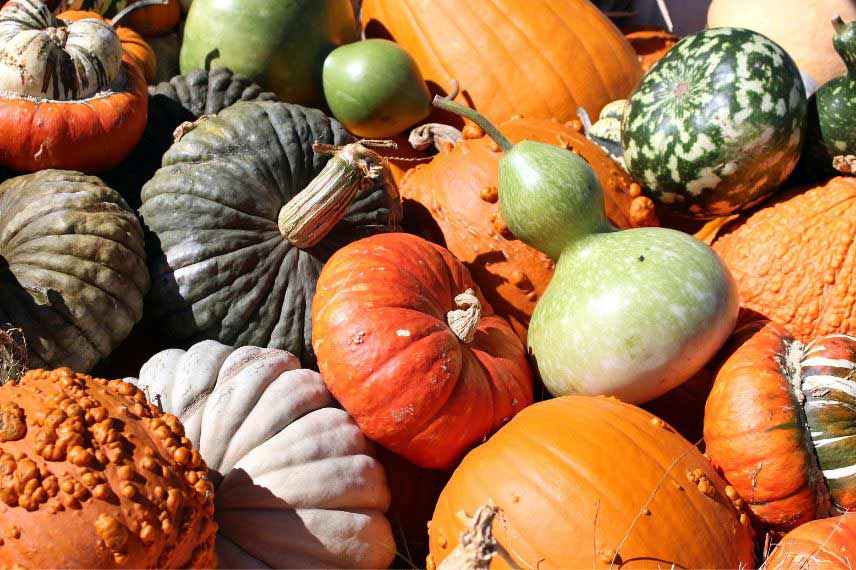
When to harvest squashes?
Harvest of squashes is done before first autumn frosts to avoid damaging fruits. This helps preserve them for winter.
You know it’s time to harvest squashes when the peduncle (small part attaching squash to the stem) has started to lignify, that is when it has hardened and the fruit is ready to detach on its own. Also, squashes have reached ripeness when they have changed colour from green to their final hue: orange-pink for Butternut, bright orange for giant pumpkins, vivid yellow for Spaghetti squashes, or even bluish for Hungarian Blue pumpkin.
If peduncle of some squashes in your garden is still soft, leave them to ripen by placing a board, a tile or a thick mulch underneath to isolate them from soil moisture, and keep an eye on frosts.
Likewise, if some are damaged and at risk of rotting, harvest them without delay, they will finish ripening indoors.
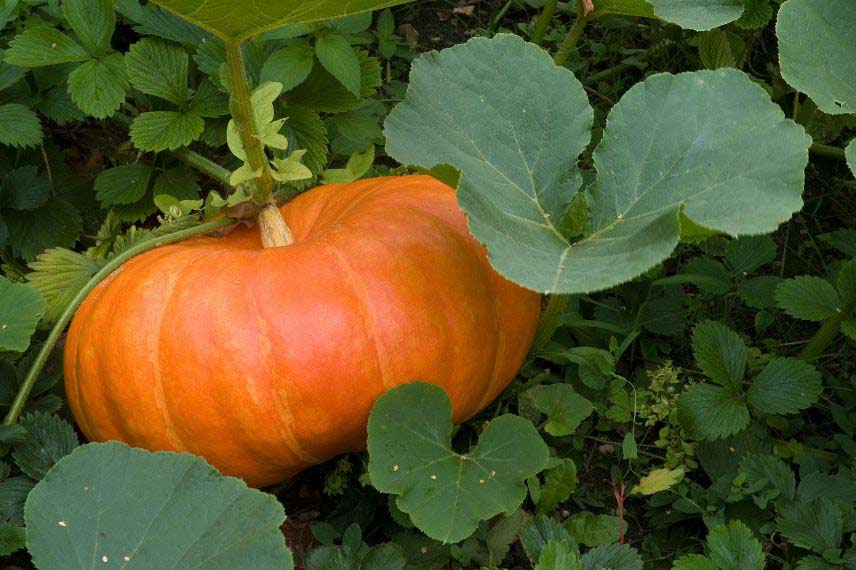
How to harvest squashes?
When harvesting, cut squash stems with pruning shear leaving the peduncle entire, as this improves storage. Avoid carrying them by the peduncle and handle carefully so they remain free from cuts or shocks.
You can leave them to dry in sun on dry soil for 1–2 days. If weather does not allow, bring them indoors immediately.
Optionally brush your squashes gently under a trickle of water or rub them with a dry cloth to remove any traces of soil if they are maculated, and to get rid of small insects. Then dry them to improve shelf life.
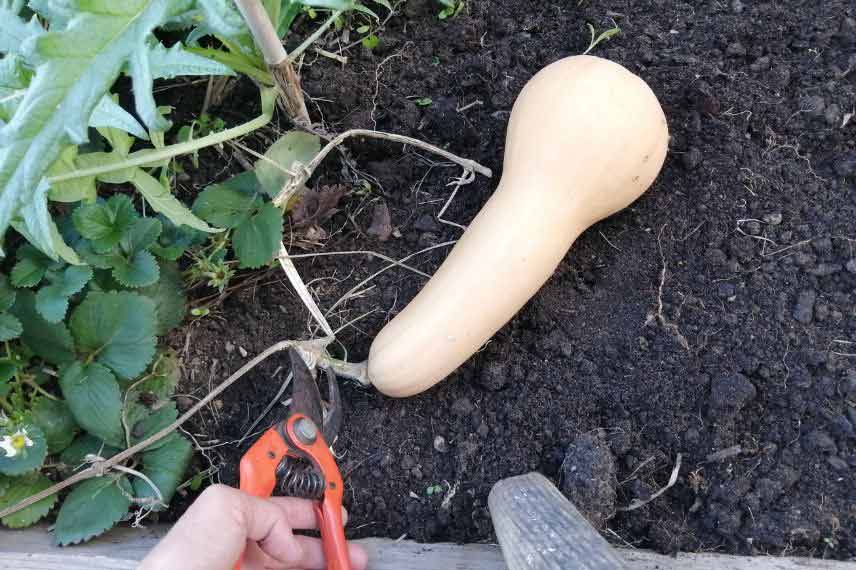
Cut stem of each squash leaving the peduncle entire
Where and how to store squashes?
Unlike other fruits and vegetables, squashes tolerate room temperature very well, but their ideal storage temperature is around 15 °C. Best to store them in a space such as a garage or shed that is clean, ventilated and frost-free. Darkness is not necessary.
Place them on boards, shelves, pallets or very dry straw so they do not touch one another. Avoid stacking.
Once stored, check from time to time that squashes are not rotting, remembering to turn them gently. If one shows signs of mould, remove affected squash quickly before it contaminates others. If a squash begins to rot, cook it promptly removing only the affected part; the rest, if still firm, is edible.
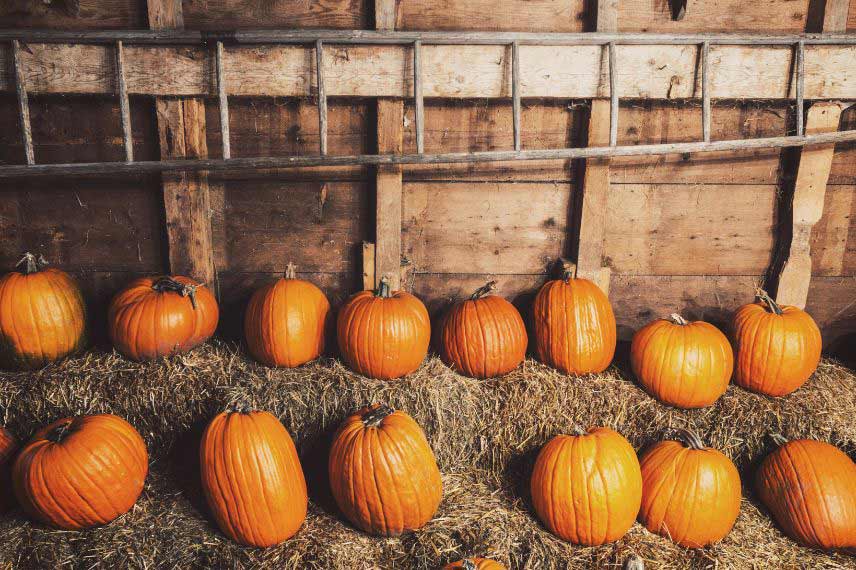
Store squashes spaced a few centimetres apart
How long do squashes keep?
All squash varieties can be stored whole for several months and can be eaten throughout winter.
Further reading
- Discover or rediscover our range of squashes
- For complete information, read our article on squashes: sow, plant, grow, harvest































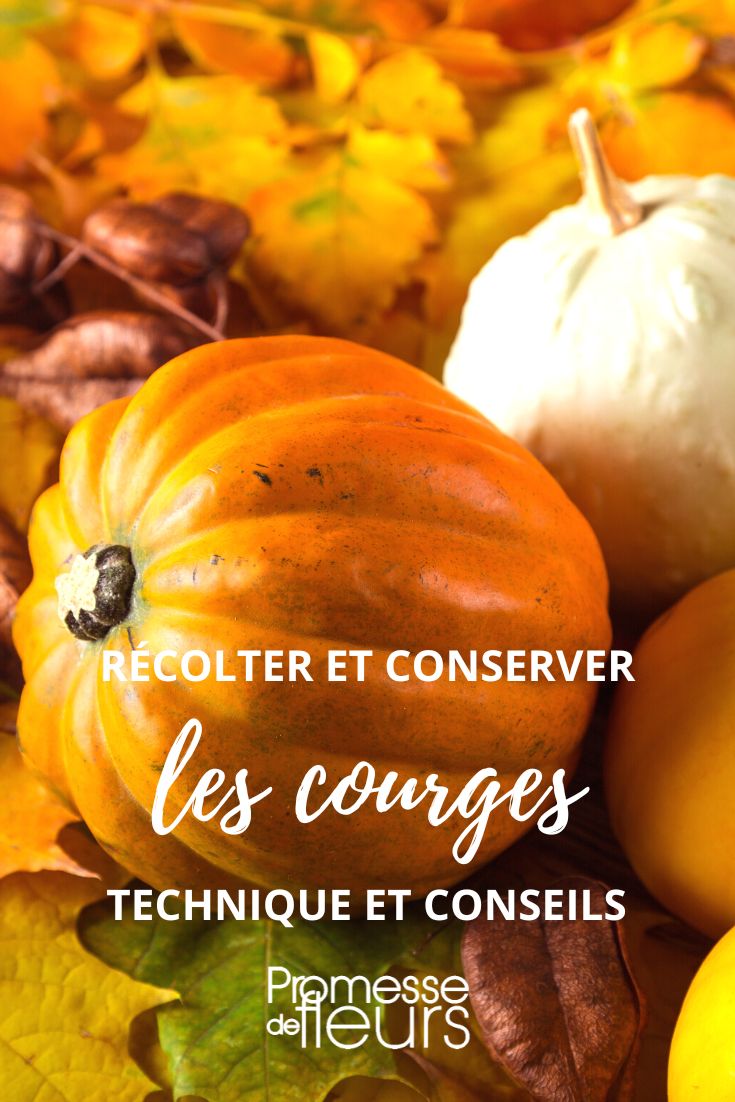
Comments